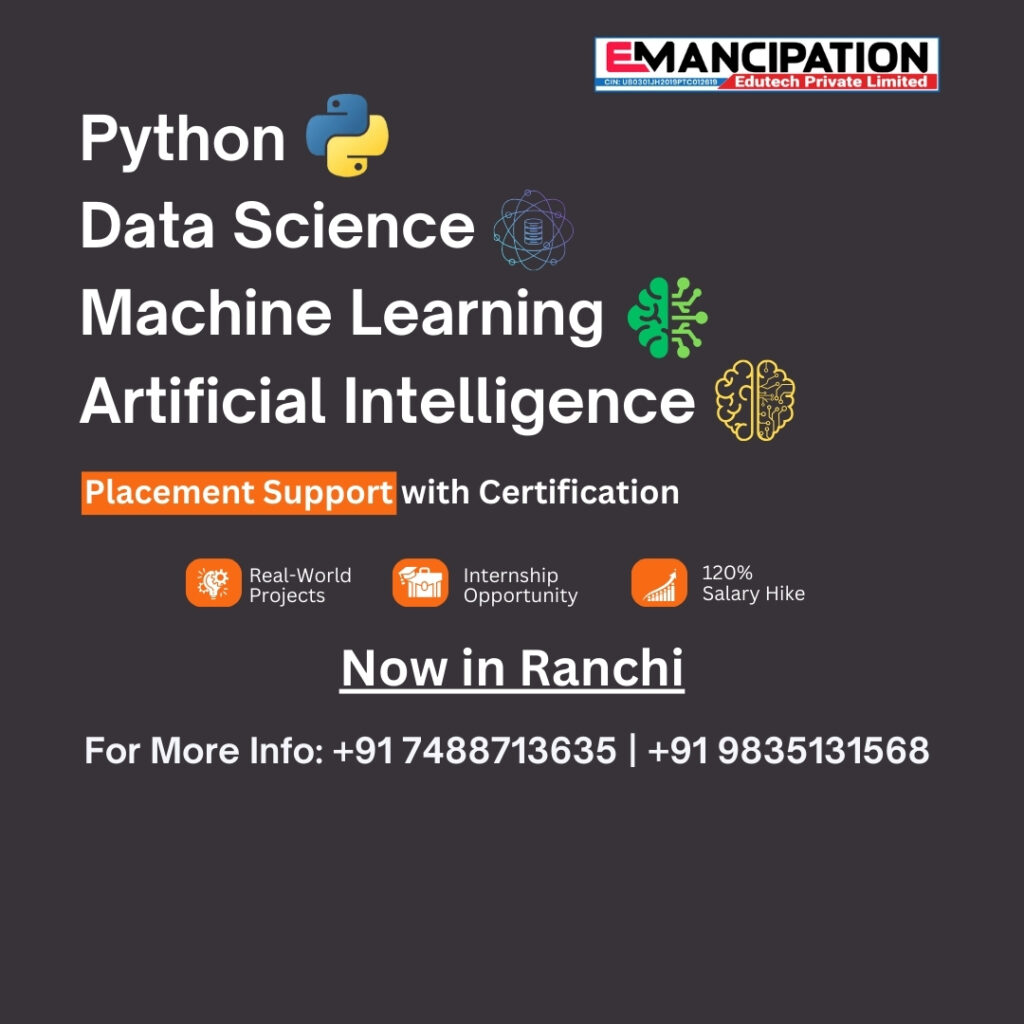Python programming for beginners Python has become the heart of modern technology. In 2025, when AI, machine learning, and automation are transforming industries, Python programming for beginners remains the most recommended and beginner-friendly entry point into the world of IT. Python’s sweet spot lies in its simplicity—its syntax feels almost like English, making it extremely easy for new learners to grasp. The biggest reason behind Python’s popularity is its versatility. Whether you want to build websites, automate tasks, analyze data, create AI models, or develop mobile apps, Python offers frameworks for everything. Libraries like NumPy, Pandas, TensorFlow, PyTorch, Matplotlib, Selenium, and Django give Python unmatched power compared to other languages. For students aiming to build careers in data science, artificial intelligence, or machine learning, Python is not just an advantage—it is a necessity. Most AI models and research papers are built with Python because it makes complex mathematical computations incredibly simple. Tools like Jupyter Notebook have made Python the language of choice for experimentation and visualization. Python also dominates automation. Companies prefer Python scripts to automate repetitive work such as data entry, server monitoring, testing, and system administration. This saves time and reduces human error. As automation becomes a major part of modern IT operations, Python experts are in high demand. For beginners, Python is the easiest programming language to start with. Students can write meaningful programs within the first few days of learning. This instant progress builds confidence and motivates deeper learning. Python’s active community and abundance of learning materials make it ideal for self-learners. Careers in Python are booming. The demand for Python developers is growing across fields like: Python developers earn between ₹4–10 LPA at entry level, and experienced AI engineers earn ₹20–40 LPA or more. In 2025, Python programming for beginners remains the smartest skill investment. It opens doors to multiple IT domains, ensures long-term career growth, and positions students for high-paying jobs in the world of AI and automation. Blog 3: Web Development in 2025 – Skills, Tools, and Roadmap for a Successful IT Career Focus Keyphrase: Web development roadmap 2025 Web development remains one of the most exciting and high-demand IT careers. In 2025, companies need highly skilled developers who can build scalable, fast, and user-friendly web applications. Whether you want to become a frontend developer, backend engineer, or full-stack expert, following a proper web development roadmap 2025 is essential. Modern web development has evolved significantly. Today, employers seek developers who understand not just coding but also UI/UX, performance optimization, accessibility, responsive design, and cloud deployment. Let’s understand the complete roadmap: Frontend Development (Client-Side) This is what users see and interact with. Key technologies include: After mastering basics, students should learn modern JavaScript frameworks such as React, Vue, or Angular. In 2025, React remains the most in-demand skill. Backend Development (Server-Side) Backend developers build APIs, databases, authentication systems, and logic. Technologies include: Backend developers ensure security, performance, and scalability. Full-Stack Development A full-stack developer handles both frontend and backend. In 2025, companies prefer MERN (MongoDB, Express, React, Node), MEAN (MongoDB, Express, Angular, Node), and Java Full Stack developers. UI/UX Understanding Even basic design knowledge makes developers more valuable. Tools like Figma and Adobe XD help create clean and user-friendly interfaces. DevOps & Deployment No project is complete without deployment. Full-stack developers should learn: The demand for web developers has grown due to the rise of e-commerce, digital payments, startups, AI-driven apps, and SaaS software. Freshers earn ₹3–8 LPA, while experienced full-stack developers earn ₹12–25 LPA. Following the web development roadmap 2025 gives students a clear direction and ensures they stay ahead in the competitive IT industry.






